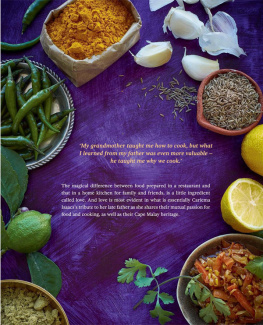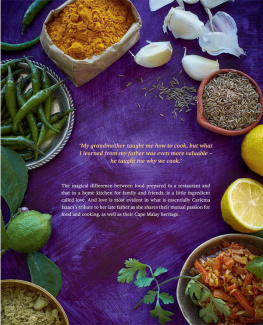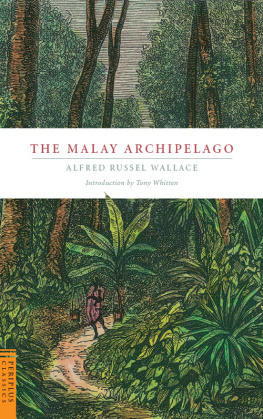Postscript and Acknowledgments
This book is based largely on the words and knowledge of one of Malaysia's great master carvers, Nik Rashiddin Nik Hussein, who tragically died after a short illness on 21 August 2002 in Kota Bharu, Kelantan. Nik Rashiddin was only 47 years old, but had spent his entire working life in the pursuit of perfection, knowledge and the discovery of the foundations of Malay design.
The compilation of this book has been a complex but intensely inspiring undertaking as we have endeavoured to fulfil the vision of this man. It was Nik Rashiddin's greatest desire to document the available knowledge about his artits history, philosophy, traditions and techniques. His passion has driven us, a motley collection of individuals, on a quest to discover the origin of a particular branch of Malay design, of which this book is but the first step.
When Norhaiza Noordin, then a young carver, first met Nik Rashiddin he discovered in him a kindred spirit, and together the two men travelled around Asia collecting relevant artefacts and talking to various craftsmen. Nik Rashiddin and Norhaiza are not simple artisans, blindly following the traditions laid down by their fore-bears. Rather, they are true artists, deeply concerned with the philosophy, history and evolution of their chosen art form. They have each invested much of what they have earned in their remarkable collections of artefacts from which they have both learnt a great deal and used as a springboard to develop their own art. They are deeply committed to perpetuating the knowledge they have gained and to creating the means to ensure the survival of their ancient heritage.
Nik Rashiddin and Norhaiza were quick to realize that some of their views offered a very different perspective of currently accepted theories. However, they were confident enough to propose them in the hope that any controversy will inspire others to seek further insight into an area that has seen woefully little research.
Norhaiza first took me to meet Nik Rashiddin in November 1998. I had wanted to stage an exhibition of Norhaiza's own outstanding work, but he insisted that such a venture was only possible with the collaboration of his mentor, Nik Din. I remember sitting in Nik Rashiddin's house, still very weak from the typhoid fever from which I was recovering, listening to him talk passionately about woodcarving, history, culture and so much more. It was as if a flood of wonderful ideas were being poured over my headhalf of them not fully understood until much laterbut I knew then that this was a man to whom everyone's support was fitting.
We were aware that such an undertaking would not be without obstacles. Most discouraging was the scepticism with which the project was greeted. We were told repeatedly that the project was based on 'too little evidence' and 'too much fantasy', that 'so much of it was controversial'. Despite all this, we persevered.
Our first move was to arrange a tour of museums and visits to keris collectors in the Netherlands and England so that Nik Rashiddin and Norhaiza could 'test' their knowledge on the international scene as well as broaden their own perspectives. During this trip, the two men were able to study many historical carvings from the Malay archipelago which had been presented as gifts several centuries ago, carvings that had accredited histories and dates attached to them. They also had the opportunity to exchange ideas with some of the most knowledgeable people in Europe, who had made the study of keris and allied carvings their life's work. Nik Rashiddin spent endless hours in discussion with these men, bringing many unknown aspects of their collections to their attention and widening his own knowledge of what had already been documented.
Our European experience gave us the confidence to go ahead with our plans. We launched a two-pronged project: a small initial exhibition in Malaysia sponsored by the Malaysian Timber Board in 2000, followed by a major exhibition of wood and woodcarving in 2003, which lays out the philosophical principles and practical development of woodcarving in the Malay world. This opened in September 2003 at the Asian Civilisations Museum in Singapore, and will travel to the Brunei Gallery in London in January 2004 before returning to Malaysia and a retrospective of Nik Rashiddin's work at Muzium Negara. This book has been written to accompany the exhibition, as well as to provide a deeper insight into the subject.
The Team
The Spirit of Wood project would not have been possible without the dedication of many individuals, including writers, designers and editors, some who wish to remain anonymous. We were very fortunate to find in Dr Farish A. Noor a writer who is as passionate as ourselves about the subject. He spent many months researching the subject as well as many hours talking with Nik Rashiddinwho reported feeling, after one particularly long all-night session, as though a vacuum cleaner had sucked out all his knowledge. Farish continues to promulgate Nik Rashiddin's knowledge through articles and monographs, and is preparing an important work on the kens.
Eddin Khoo recorded a long conversation with Nik Rashiddin, which forms the introduction to this book and is very important in providing a record of Nik Din's philosophy of woodcarving. He also spent many months struggling to rationalize the accepted knowledge and research on Langkasuka with Nik Rashiddin's strongand often controversialbeliefs and theories.
Rosnawati Othman, both as a researcher of motifs and the wife and helpmate of Nik Rashiddin, ensured that we all needed little excuse to make another trip to Kelantan, so wide is her own knowledge of woodcarving and so warm her welcome. Her role now becomes even more important, as she, with Nik Rashiddin's brother, Nik Rashidi Nik Hussein, who also spent many hours preparing the artefacts for the exhibition, and Norhaiza Noordin, plan how to ensure that Nik Rashiddin's work will be perpetuated through the Kandis Resource Centre.
David Lok took the vast majority of photographs used in the book. Rigging up his studio in an old Kelantanese house with three walls and half a floor, that was being restored by Nik Rashiddin, David soon discovered that his normal practice of working late at night with spotlights effectively fused all the lights in the village. Unfazed, he produced many hundreds of superb photographs, a wonderful basis for the detailed database that has been produced in tandem with this book.
David's wife, Chiang Khai Chong, kindly and courageously took on the financial management of the projects. She also proved to be a first-class cleaner of carvings, as she gently removed years of dust, scorpions and cobwebs from the precious contents of Nik Rashiddin's and Norhaiza's storerooms with the aid of David's camera brushes.
My own role has been to act as a liaison for Nik Rashiddin, to initiate and develop contacts and sources of support, funding and promotion, to encourage and facilitate progress between the various areas of the projects and, in particular, to supply the necessary information for the captions which accompany the photographs. The most enjoyable aspects have been the research required to corroborate Nik Rashiddin's ideas, and the actual selection, care and mounting of the artefacts for both photography and exhibition. The greatest difficulty has been the need to rein in our overriding desire to exhibit everything. Everywhere we turned, we would discover yet another artefact of beauty and style. Luckily for us, our exhibition design architect, Jade Saw, was always on hand both to control these urges and to advise on the best way to showcase the pieces.
Several others offered invaluable advice, help and encouragement, which we accepted gratefully. Tan Joo Lee was responsible for the initial editing of the manuscript. Dr Annabel Gallop of the British Library gave us her support and advice from the very beginning of the project, as did Dr Rudin Sallinger. Dr Geoffrey Wade and Raimy Che Ross also contributed advice and helpful criticism. Zain Azahari gave us invaluable support in setting up the Kandis Resource Centre as well as being an articulate promoter of the project in the context of fund raising. D. P. Naban has now taken on the role of looking after the legal aspects of the project's existence. A huge debt of gratitude is owed to all these people.











